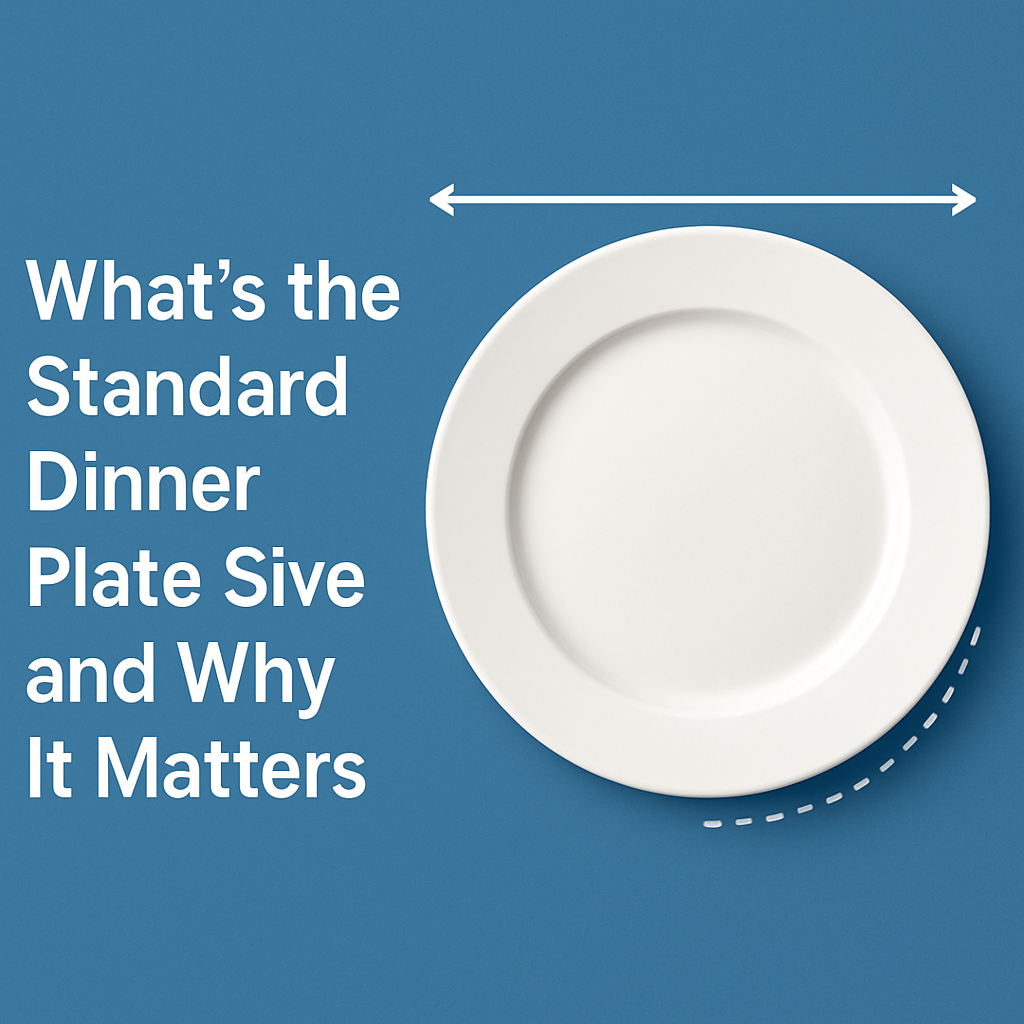When setting the dinner table or purchasing a new dinner plates set of 6, one of the most overlooked yet important considerations is the size of the dinner plate itself. The standard size of a dinner plate not only affects your dining aesthetics, but it also plays a surprising role in portion control, storage practicality, and even the functionality of your dishwasher. Whether you prefer a ceramic dinner plate for elegance or often use dinner plates disposable for convenience, understanding dinner plate sizes can help you make smarter kitchen and health decisions.
What Is the Standard Dinner Plate Size?
The most commonly used dinner plates typically measure between 10 and 10.5 inches (25 to 27 centimeters) in diameter. This size is what’s generally accepted as the standard dinner plate size in many households and restaurants in countries like the United States. However, this hasn’t always been the case.
A Look at the Changing Plate Dimensions Over Time
Compared to decades ago, today’s dinner plate is significantly larger. In the 1950s, the average dinner plate was around 9 inches (23 cm) in diameter. As plate sizes increased, so too did the amount of food being served. This subtle change has had broader implications on eating habits and health outcomes, suggesting that the size of our plates could influence our waistlines.
Why Dinner Plate Size Matters
While the difference of an inch or two may seem minimal, it can dramatically impact several aspects of your daily life and routine, especially how much food you consume and how your tableware functions.
1. Portion Control and Perception
The concept of "portion distortion" is closely tied to dinner plate size. Larger plates tend to lead to larger portion sizes without you even realizing it. When a dinner plate with food appears to have 'empty space,' the natural inclination is to add more, regardless of whether you're still hungry. Conversely, smaller plates can help you feel satisfied with less food by giving the illusion of a fuller plate.
2. Compatibility with Kitchen Appliances
The average home dishwasher is designed to accommodate standard-sized plates of about 10.5 inches. Oversized plates, like 12-inch ceramic dinner plates, may not fit well, leading to inconvenience and inefficient cleaning. The same goes for cabinet space—the bigger the plates, the more storage space they consume.
3. Meal Presentation and Dining Experience
Bigger isn’t always better when it comes to aesthetics. A standard ceramic dinner plate offers a balanced canvas for plating food attractively. It encourages portioned serving sizes and can elevate the visual appeal of your meals. Conversely, disposable dinner plates, often used for casual gatherings, are typically smaller (around 9 inches) and prioritize convenience over presentation.
Types of Dinner Plates and Their Typical Sizes
Not all dinner plates are created equal. They vary not just in materials and designs, but also in sizes based on their intended use. Let’s explore common types and dimensions:
- Standard Ceramic Dinner Plate: 10–10.5 inches. Ideal for daily family meals and elegant dinners alike.
- Compact Dinner Plates: 8–9 inches. Great for small portions, diet-focused meals, or smaller kitchen spaces.
- Oversized Plates: 11–12 inches. Used in high-end restaurants or for elaborate plating but less practical at home.
- Disposable Dinner Plates: 8–10 inches. Handy for picnics, parties, and events where cleanup time is limited.
When buying a dinner plates set of 6, consider not just the look and feel but also how the size aligns with your personal needs.
How to Choose the Right Dinner Plate Size for Your Needs
Choosing the correct dinner plate involves balancing aesthetics, functionality, health, and space. Here are a few tips:
Think About Your Lifestyle
If you frequently host formal dinners, investing in larger ceramic dinner plates might suit your needs. However, for everyday meals or small households, an 8–10 inch plate may suffice.
Consider Your Health Goals
Smaller plates naturally encourage smaller portions, which can help with weight management. If you're on a specific diet or trying to eat mindfully, downsizing your dinner plates can assist in reducing calorie intake without major effort.
Evaluate Storage & Appliance Constraints
Make sure the set you choose fits well into your dishwasher and cabinets. Check the dimensions of your existing kitchenware before purchasing a new dinner plates set of 6 to avoid incompatibility issues.
Use Different Plates for Different Occasions
Combining different types of plates for different contexts is a practical approach. Use ceramic dinner plates for family nights or holidays, while keeping a stash of dinner plates disposable for casual get-togethers or outdoor events.
Eco-Friendly Choices and Sustainable Sizing
As consumers grow more environmentally conscious, it’s important to consider the impact of disposable plates versus reusable options.
Choosing a responsibly made ceramic dinner plate can reduce household waste and last for years, making them a sustainable investment. For unavoidable occasions that require disposable options, opt for biodegradable or compostable dinner plates disposable instead of single-use plastics.
Conclusion: Plate Size Is More Than Just a Measurement
From portion control and style to practicality and health, the size of your dinner plate has a ripple effect on many aspects of daily life. Whether you're choosing a dinner plates set of 6 or shopping for party-ready dinner plates disposable, understanding standard dinner plate size will help you make more informed and beneficial dining choices.
So the next time you’re plating dinner or stocking up the kitchen, take a moment to look beyond the color and pattern—because the size, quite literally, matters.



Share:
Crafting Elegance